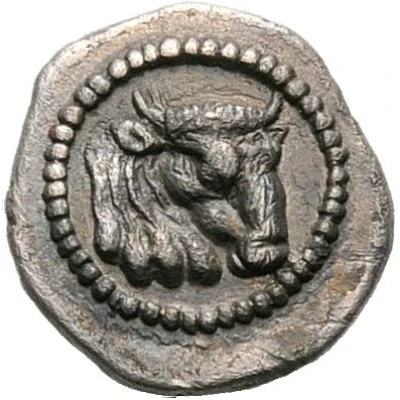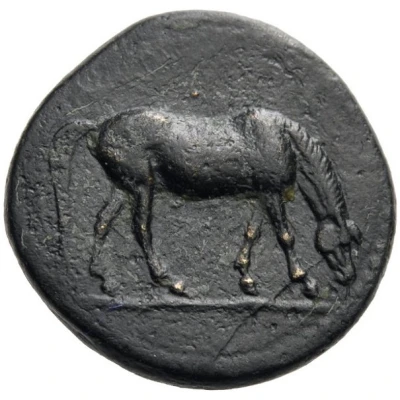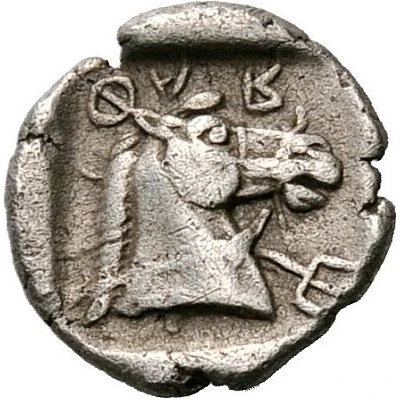


© Nomos AG
Hemiobol 440 BC - 400 BC
| Silver | 0.44 g | - |
| Issuer | Pharkadon (Thessaly) |
|---|---|
| Type | Standard circulation coin |
| Years | 440 BC - 400 BC |
| Value | Hemiobol (1⁄12) |
| Currency | Drachm |
| Composition | Silver |
| Weight | 0.44 g |
| Shape | Round (irregular) |
| Technique | Hammered, Incuse |
| Demonetized | Yes |
| Updated | 2024-10-10 |
| Numista | N#171186 |
|---|---|
| Rarity index | 97% |
Reverse
Ram standing to left within incuse square
Script: Greek
Lettering: Φ Α Ρ Κ Α
Comment
Traité IV, 568, pl. CCXCCII, 16 var. (ram to right).
Interesting fact
The Hemiobol coin from Pharkadon (Thessaly) was used as a form of currency in ancient Greece during the 5th century BC. Its name "Hemiobol" comes from the Greek words "hēmi-" meaning "half" and "bolos" meaning "throw", which refers to the coin's value being equal to half the value of a full silver drachma. Despite its small value, the Hemiobol was widely used in trade and commerce, and many have survived to this day as collector's items.



